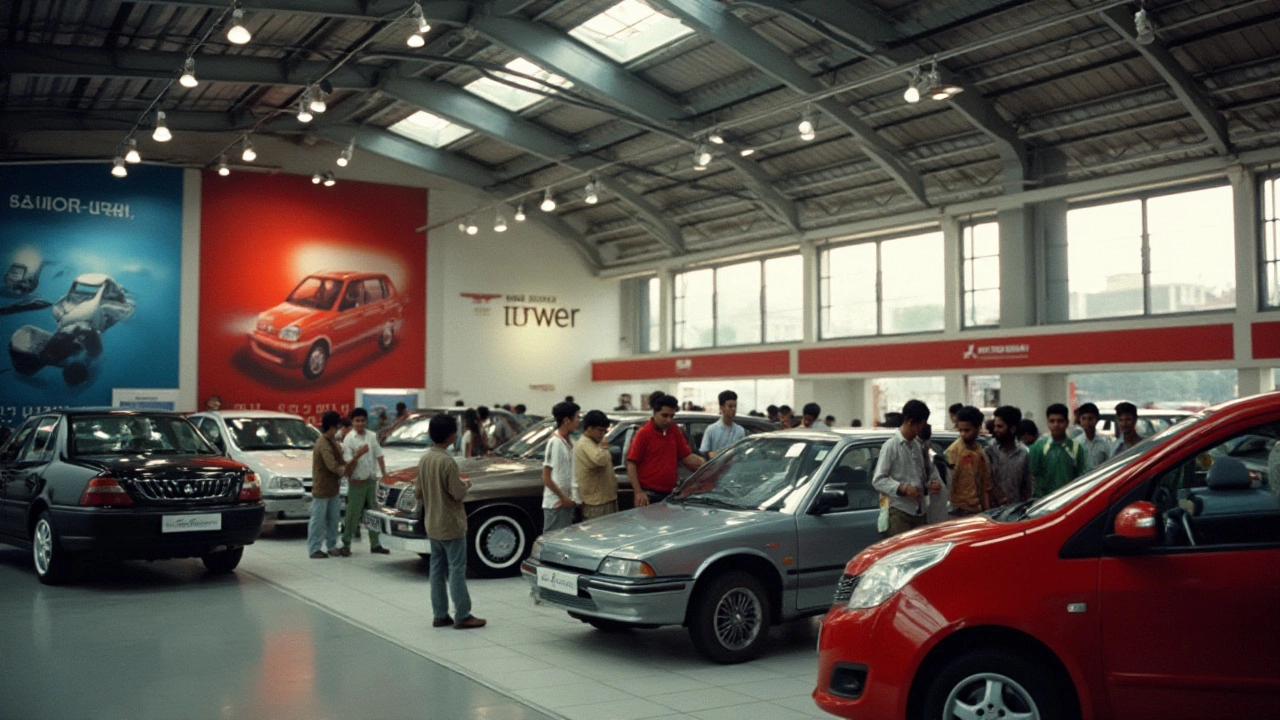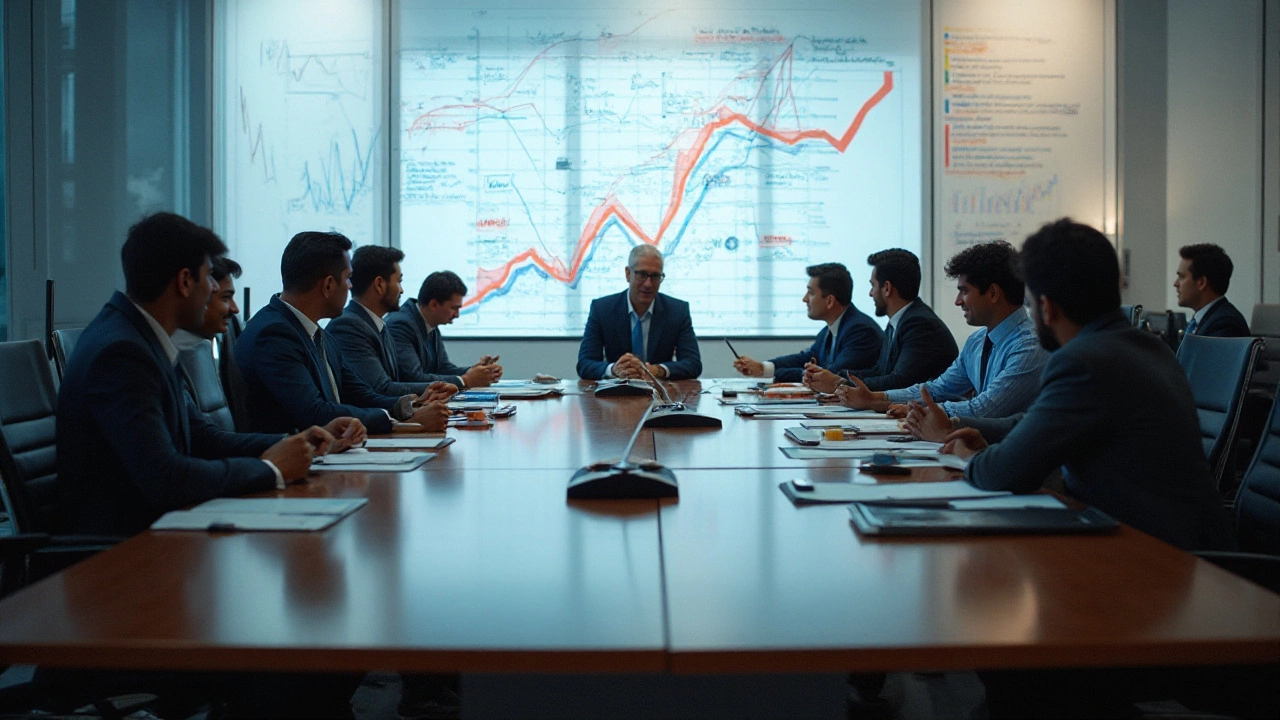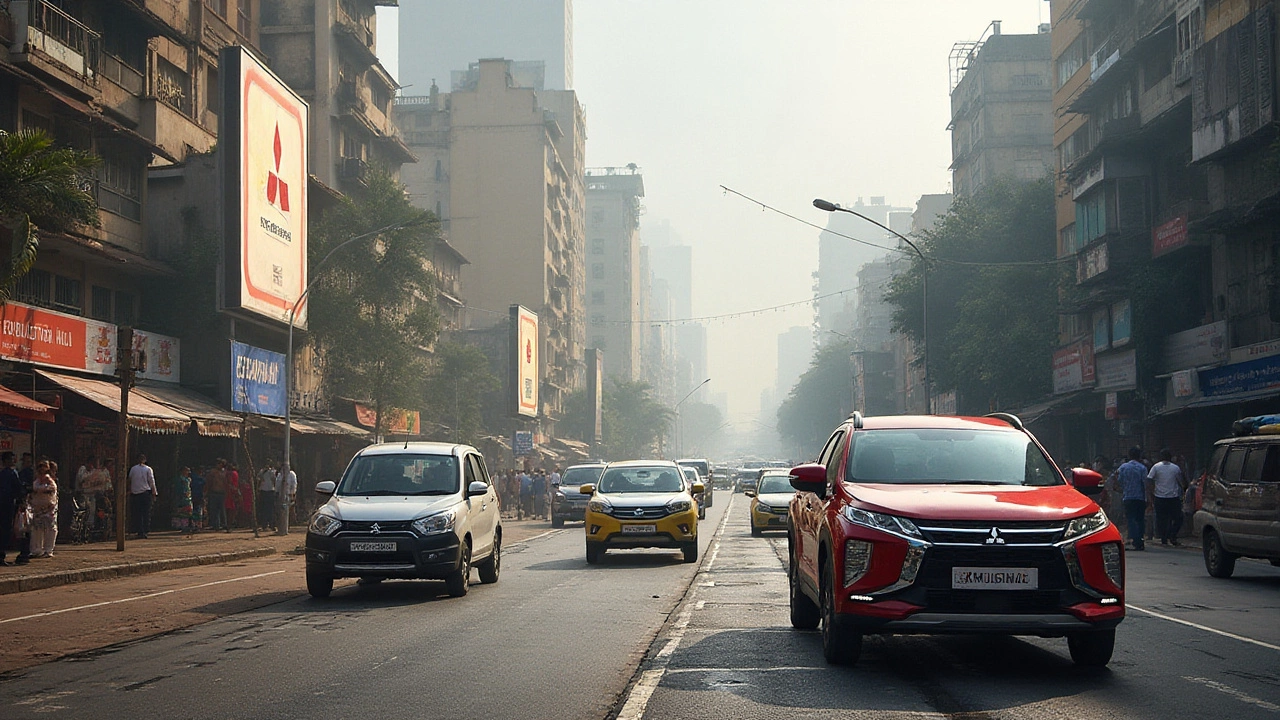
In a once-thriving market peppered with global automotive giants, Mitsubishi found itself reeling under complexities that nudged it out of the Indian market. The company's departure left car enthusiasts and industry experts pondering the array of factors that led to this unexpected retreat. From manufacturing hurdles to a fiercely competitive landscape, the narrative of Mitsubishi in India is multilayered. It's a story not just of an exit, but of the evolving dynamics in the automobile sector within the country.
Like many foreign carmakers, Mitsubishi entered India with dreams of expansion and success, driven by their cutting-edge vehicles. Yet, the path was far from smooth. This article takes you on a journey through Mitsubishi's trials and triumphs, exploring how they initially captured the market's attention and where things began to unravel. Understanding these dynamics can provide valuable insights, not just for industry insiders but for any enthusiast fascinated by the ever-shifting world of car manufacturing.
- Mitsubishi's Early Presence in India
- Market Challenges and Competition
- Strategic Missteps and Their Impact
- Industry Trends and Consumer Preferences
- Lessons and Future Prospects
Mitsubishi's Early Presence in India
Mitsubishi's journey into the bustling automobile landscape of India began in the mid-1990s when the market was ripe for international automotive giants. The country, being in the early stages of global economic integration, attracted many car manufacturers looking to tap into a country with immense potential for growth. Mitsubishi's initial salvo into this promising territory arrived in the form of the Mitsubishi Lancer, a car that swiftly became emblematic of style and efficiency.
The Lancer wasn't just a vehicle; it was a statement. Known for its robust build and cutting-edge technology, it quickly appealed to Indian consumers who were looking for a blend of innovation and reliability. Partnering with Hindustan Motors, one of the oldest carmakers in India, Mitsubishi managed to leverage local expertise to tailor their offerings to the unique demands of the Indian clientele. This partnership helped Mitsubishi establish a strong footprint, drawing in consumers with the promise of Japanese precision and engineering excellence.
At the time, the Indian automotive market was limited in terms of luxury and premium car options. Mitsubishi's decision to roll out a model like the Lancer was strategic, positioning itself attractively between the local and international offerings. Mitsubishi capitalized on the rising aspirations of the Indian middle class, who were eager to embrace brands synonymous with performance and prestige. The market eagerly welcomed features like advanced suspension systems and efficient engines, which distinctively set Mitsubishi apart.
As noted by industry expert Rakesh Batra, "The early adoption of foreign brands like Mitsubishi marked a pivotal shift in consumer preferences, driving the market towards global standards."
Despite the enthusiastic reception, Mitsubishi faced challenges that were not entirely anticipated. Import tariffs and regulatory constraints posed significant hurdles, making it tough to maintain competitive pricing. Still, the alliance with Hindustan Motors played to their advantage, providing a valuable insight into navigating the complex tapestry of local manufacturing and distribution networks.
The roads seemed to pave well for Mitsubishi. However, undercurrents of rapid market evolution soon began to influence their trajectory. For a time, Mitsubishi held considerable sway, but the landscape wasn't fixed. The dynamic interplay of rising competitors, shifting consumer allegiances, and economic fluctuations painted a more complex picture as the years rolled on.
Long before the full spectrum of these challenges became apparent, Mitsubishi's early years in India were characterized by optimism and strategic growth. They managed to carve a niche for themselves, balancing the intricacies of local partnerships with the innovative force of their international repertoire. In those days, being a Mitsubishi owner in India was more than a matter of transportation; it was a reflection of progressive taste and an affinity for global trends.
Market Challenges and Competition
The journey of Mitsubishi in India encountered a multitude of market challenges that significantly influenced its eventual exit. Entering a market as diverse and rapidly evolving as India's is no simple feat. One primary struggle was understanding and adapting to the local consumer demands, which are greatly influenced by affordability and utility. Indian consumers have a distinct preference for compact and fuel-efficient cars over the higher-end models that Mitsubishi was renowned for internationally. While Mitsubishi's technologically advanced features were admirable, they often came with a price tag that majority of the market found prohibitive. This gap between product offering and consumer expectation left the brand grappling for a foothold in more economically accessible segments.
The competition landscape was another daunting aspect. The moment Mitsubishi set its foot in the Indian market, it found itself pitted against well-established local players and formidable international brands that had already carved substantial niches. Automakers like Maruti Suzuki and Hyundai mastered the art of combining affordability with desirable features, a formula that Mitsubishi struggled to match. The introduction of affordable models with decent performance and innovative marketing strategies by these competitors further compounded Mitsubishi's challenges. Intense price wars made it perpetually difficult for Mitsubishi to maintain its financial equilibrium and resonate with cost-conscious Indian buyers.
"The Indian automotive market is fiercely competitive, with dozens of brands vying for a share in an ever-fluctuating landscape. It's critical to be both agile and precisely aligned with consumer expectations," noted an industry expert from Autocar India.
Regulatory hurdles also played a significant role in impeding Mitsubishi's progress. India's automobile market is heavily governed by stringent emission norms and safety regulations, often necessitating rapid technological upgrades. While Mitsubishi managed global compliance, the frequent policy shifts within India required repeated adaptations, which elongated rollout timelines and inflated operational costs. This perpetual state of catch-up made it increasingly difficult for Mitsubishi to maintain its competitive edge. As such, strategic alignment with localized standards and regulations often flipped an intended opportunity into an unforeseen constraint.
Moreover, the advent of transformative trends, such as the shift towards electric vehicles (EVs) and hybrids, significantly altered the competitive dynamics. While companies like Tata Motors and Mahindra swiftly adopted these trends, Mitsubishi lagged behind. The Indian government's push towards electric mobility favored those already invested in such technologies, further sidelining traditional automobile manufacturers. With a delay in pivoting towards EV, Mitsubishi inadvertently found itself on the outskirts of an industry swiftly moving towards sustainability.
Finally, the intricate supply chain issues exacerbated by Mitsubishi's operational challenges cannot be overlooked. While localization of production could have been a critical pivot for reducing costs and increasing market embedment, Mitsubishi's supply chain was often extensive and reliant on imports. Disruptions due to global economic shifts or policy changes led to fluctuations in availability and pricing, deterring both investors and consumers alike. All these challenges collectively painted a competitive scenery that Mitsubishi, despite valiant efforts, found arduous to navigate effectively.

Strategic Missteps and Their Impact
As the dust settles on Mitsubishi's departure from the Indian car market, a closer look reveals a series of strategic missteps that significantly contributed to their challenges. One of the initial miscalculations was their decision to launch models that were considered outdated compared to what contemporaries offered. At a time when competitors were rolling out modern, fuel-efficient vehicles tailored for Indian conditions, Mitsubishi stuck to its global lineup, which did not resonate well with the local consumers. They seemingly underestimated the evolving preferences of Indian buyers, who increasingly leaned towards compact, budget-friendly cars ideal for urban environments.
Moreover, Mitsubishi's partnership strategy in India proved to be another crucial misstep. Their collaboration with Hindustan Motors, although historic, failed to meet the high demands of a burgeoning car market. Hindustan Motors' inability to ramp up production and maintain service quality further hindered Mitsubishi's competitiveness. The cars, often renowned globally for reliability, suffered due to subpar local assembly and after-sales service. "The lack of a strong dealership network and inconsistent availability of spare parts led to diminishing customer trust," noted an industry analyst from Automotive Insights in 2023.
Amidst a rapidly transforming automotive scene, Mitsubishi found itself struggling to establish a robust brand identity in India. While brands like Maruti Suzuki and Hyundai were quick to adapt their marketing strategies to reflect local sentiments and expectations, Mitsubishi continued with a somewhat generic global marketing approach. An inadequate focus on digital marketing and a failure to capitalize on social media trends meant they were lagging behind their more adaptable competitors. Additionally, pricing strategies that failed to accommodate the price-sensitive nature of the Indian market helped widen the gap between potential customers and Mitsubishi's offerings.
The economic landscape of India, with its varying regulations and tax structures, presented another layer of complexity for Mitsubishi. In contrast to other manufacturers who swiftly aligned with new norms and policies, Mitsubishi's pace seemed sluggish. The delay in adopting Bharat Stage VI emission standards—while other manufacturers were proactive—hampered their product lineup significantly. Such strategic inertia eroded their market share, as potential customers found alternatives elsewhere. As a result, Mitsubishi was unable to capitalize on the burgeoning demand for vehicles that met both environmental and performance criteria.
It's noteworthy how reflecting on instances like this, companies can glean vital lessons about staying agile in a challenging market landscape. Recognizing and quickly responding to customer expectations, fostering adaptable partnerships, and tailoring marketing tactics to resonate with local audiences are imperatives. The case of Mitsubishi in India serves as a cautionary tale—a reminder of the consequences of strategic oversight amid a rapidly evolving marketplace. In nurturing future prospects, automakers are urged to embrace adaptive strategies, ensuring they remain attuned to market trends and consumer needs, and perhaps securing a more resilient standing within dynamic global markets.
Industry Trends and Consumer Preferences
In recent years, India has become a kaleidoscope of evolving consumer preferences and dynamic industry trends, reshaping the landscape of the automotive market. Indian consumers have steadily shifted their focus towards vehicles that are not only fuel-efficient but also integrated with the latest technology. Particularly, the demand for small cars and SUVs has soared, thanks to urbanization and changing lifestyles. The need to navigate through congested city streets effortlessly has driven a spike in the popularity of compact SUVs. This preference has carved out a significant segment in the car manufacturing market, which some automakers, like Mitsubishi, struggled to capitalize on effectively.
The rise of environmental awareness among consumers is another trend influencing the industry. Customers are increasingly leaning towards vehicles with lower emissions, nudging manufacturers to innovate in eco-friendly technologies. As a result, electric and hybrid vehicles are making headway into the mainstream market, capturing the imaginations and wallets of a new generation of buyers. This shift poses challenges for traditional automakers unless they adapt swiftly. Mitsubishi, despite its innovations, lagged in establishing a robust presence in this burgeoning segment, which affected its standing in India.
Indian consumers do not just seek a car; they crave an experience. The purchase process, after-sales service, and ownership experience shape the brand perception significantly. Companies that excel in offering seamless, customer-centric interactions find themselves rewarded by loyalty and word-of-mouth recommendations. Fast-paced urban lifestyles have also driven a demand for features like connectivity, touchscreen infotainment systems, and advanced safety technologies. A car today is more than just a transportation mode; it's a mobile home reflecting one's personality and lifestyle.
There's a pertinent statistic that illustrates this modernization: As of 2023, approximately 40% of cars sold in India come equipped with advanced driver assistance systems (ADAS), a clear indication of consumers' growing affinity for technology-driven safety features. This pressure to innovate has been both a barrier and an opportunity for carmakers, compelling them to either keep pace or be left behind. In this rapid transformation, Indian customers have become well-informed, price-sensitive, and aware of international standards, often comparing features across brands before making a purchase.
"The Indian market thrives on diversity and adaptability," says Rajiv Chaba, President & Managing Director at MG Motor India. "Staying attuned to these shifts is imperative for any brand wishing to succeed." Competition is fierce, not just among existing global brands but also from robust homegrown manufacturers unlocking market potential with a deep understanding of domestic trends and preferences. Successfully navigating this landscape demands continuous adaptation to new market demands and consumer desires.

Lessons and Future Prospects
The departure of Mitsubishi from the bustling Indian market serves as an emblematic case study of the intricate dance between global aspirations and local realities. One core lesson rests in the need for adaptability. As markets evolve, carmakers must adjust their strategies not only to keep pace with competition but also to align with the nuanced demands of local consumers. In India, the consumer preference has been steadily moving towards affordable, fuel-efficient, and compact vehicles. However, Mitsubishi's heavier and often premium-oriented models failed to tap into these popular segments, leaving a void to be filled by more agile competitors.
Understanding regulatory environments also played a critical role. India, known for its stringent regulatory framework, imposes various norms and compliance standards that can be challenging to navigate. Mitsubishi's limited product lineup struggled to meet these requirements, often lagging behind in terms of innovation and compliance, especially when juxtaposed with competitors who thrived on their adaptability. These shifts in strategy are not just industry-specific; they echo the agility required across sectors facing rapid transformation.
Strategic Alliances and Technological Advancement
A vital path Mitsubishi could have explored more prolifically involves forming strategic alliances. Such collaborations have become more than a trend—they are a necessity within the automotive industry. By aligning with local manufacturers or tech companies, Mitsubishi could potentially have introduced cost-effective models tailored specifically to Indian needs. Collaborations offer opportunities to share expertise, reduce operational costs, and introduce cutting-edge technologies at a fraction of the solo-expense. As technology becomes the backbone of modern manufacturing, leveraging these partnerships could have been a game-changer.
"The future is about integration and efficiency. Collaboration between carmakers and tech firms will drive the next automotive revolution," suggests an industry analyst from McKinsey.
An eye towards sustainability and green evolution stands as another pillar for future success. In recent years, India has been pressing for greener vehicles, investing heavily in electric vehicles (EVs) and related infrastructure. While Mitsubishi boasts a rich heritage in technological innovation, including electric propulsion systems, their Indian strategy fell short of promptly leveraging this competence. The demand for EVs in India is rising exponentially; capturing this niche market could have ushered Mitsubishi into a renaissance phase.
Re-evaluating Market Re-entry
As Mitsubishi looks to the horizon, re-evaluating their approach to the Indian market is undoubtedly crucial. Should the brand consider re-entry, they would benefit immensely from conducting a detailed market study, focusing on regions with projected car demands and adjusting their product offerings accordingly. Introducing customizable options that resonate with local aesthetics and functionality preferences can bolster market acceptance significantly. If these lessons are learned, Mitsubishi might very well draft a comeback chapter for the annals of the Indian automobile history.
The complexity of navigating the Indian automobile market shouldn't deter companies but instead inspire resilience and innovation. Embracing change and adopting a localized approach could be Mitsubishi's key to unlocking future success not only in India but in any emerging market. As the global automotive landscape continues its tectonic shifts, thriving amidst these changes will depend not on resisting the currents but sailing with them. Mitsubishi's story is a reminder that adaptation and foresight are indispensable companions on the journey of business evolution.